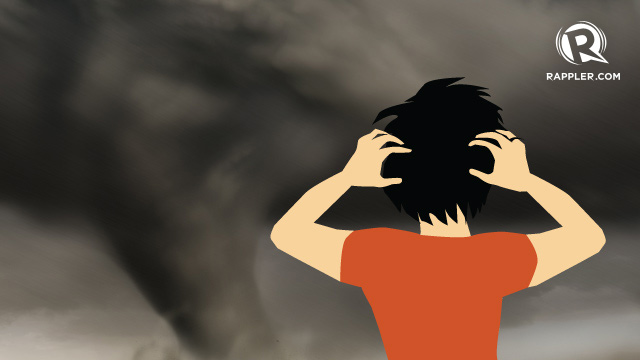SUMMARY
This is AI generated summarization, which may have errors. For context, always refer to the full article.
 I can handle cyclones, maybe even a hurricane. Heck, I’ll even say I can handle earthquakes. But I don’t think I can ever handle tornadoes. Not even the threat of them.
I can handle cyclones, maybe even a hurricane. Heck, I’ll even say I can handle earthquakes. But I don’t think I can ever handle tornadoes. Not even the threat of them.
And a threat is all it takes to send me cowering into my closet with a bottle of water, and a prayer to the nature gods to spare me the horror of a twister.
In the United States, tornadoes are an annual occurrence. In May 2012, two deadly tornadoes hit the state of Oklahoma back to back, killing 91 people and leaving US$2 billion in damages.
In those storms also perished engineer and severe storms researcher, Tim Samaras. Two critical factors came into play here. First, Oklahoma is located in Tornado Alley, the most tornado-prone area of the US. Second, it was the season for tornadoes — late spring through summer.
Just as fresh fruits ripen, and gardens bloom to mark the season, so do these funnels of stunning velocity abound. It’s a fascinating balancing act of nature.
According to the Federal Emergency Management Agency (FEMA) of the United States, tornadoes are considered “nature’s most violent storms.” That’s a categorical statement!
Tornadoes are severe storm systems formed from a dangerous cocktail of descending cold air, rising warm, moist air and wind shear – a meteorological phenomenon itself, which is responsible for rapid changes in wind speed, direction and height. The wind systems pick up speed and begin spiraling horizontally (like rolls) until, according to Samaras, a thunderstorm forms. The system picks up strength, the rotating rolls tip vertically, creating the funnel that then moves across the ground with speeds of up to 250 mph. And this happens at least 1,200 times a year in the US.
Most twisters, according to the National Oceanic Atmospheric Agency (NOAA) traditionally happen between 3 pm and 9 pm, and move eastward. However this is not a hard and fast rule. Twisters can happen any time, and move in any direction.
Samaras, famous for his Storm Chasers series on National Geographic, said that it could be a beautiful sunny day before a tornado hits. They form quickly, and usually humans only have a 15-25 minute window within which to vacate affected areas.
There are two tornado regions in the USA. Tornado Alley sees the most number of twisters annually. It affects the mid-western states of North Dakota all the way down to Texas and Louisiana. Dixie Alley is in the eastern US where Florida leads the way with most tornadoes. The state of South Carolina, where I am, is part of the Dixie Alley region.

Strange place
I have called the city of Clemson, South Carolina, home for the past year. Arguably, like most Filipinos, my impression of the US consisted of concrete jungles, shiny skyscrapers and busy intersections.
However, living in a university town south of the Mason-Dixon line presents a very different picture. Clemson, South Carolina is sprawling woodland and forest, with a massive lake at the center. Geographically part of the Appalachian region, Clemson is a nature lover’s paradise, where city girls like me panic when street lights and traffic jams aren’t to be seen for miles around.
Coming to terms with this rural yet beautiful landscape was not easy. It was difficult to love something strange. I lived in a mild state of denial about where I was – simply because it was not what I expected. I was not particularly affectionate towards people either – I tried to be polite and respectful; pleasant and reasonable, pero wala akong amor for anything and anyone. (I didn’t care for anything and anyone.)
To survive, I resolved to simply live with it, and maybe find something to like. In my state of mind though, it was easier to find things not to like.
One of those was being huddled in my closet because of a tornado warning.
It was the middle of summer, and I was alone at my apartment that day. At around 8: 20 pm, I heard a persistent beeping coming from the television: a tornado warning!
The weather bureau advised residents that the tornado would likely hit a town over the bridge from where I lived. I opened up my computer and checked Accuweather.com, the WeatherChannel.com and the local weather agency.
All said the same thing: thunderstorms, strong winds and hail were being reported in Seneca, SC, 8 miles south of where I was. Eight miles!
Vicious vortex
I opened my front door. The raspberry glow of the summer twilight was veiled. It wasn’t supposed to be sunset yet, but the sky was an ominous deep, dark indigo. The wind was blowing leaves off the trees, and small pieces of garbage across the street. Rain was beginning to fall. I held out my hand to make sure it wasn’t hail. And thankfully it wasn’t.
Still I could feel a cold, creeping fear. Could I really be alone in the middle of the worst weather phenomenon known to man? Surely, I thought, the universe didn’t mean for me to meet my end this way. Could a vicious vortex appear, fling me like a ragdoll, and leave me hanging upside down in a tree miles from where it picked me up?
Surely, this couldn’t be how it would end – alone, as a foreigner in this country, without matching underwear! I had a trip to New Orleans coming up, a degree to finish, and 15 more pounds to lose!
I was determined to face my fear. I shut the door, sent my roommate a message, put her dog in his crate, and checked the tv advisory: the warning would be in effect until 9:45 pm. I put on a jacket, gathered my important papers in my backpack, and took my gadgets, a bottle of water, and my comforter with me into my closet. It was now 9: 10pm.
I could now hear the rain drumming against the roof and the windows. Suddenly my phone rang. It was my friend, T, calling to see if my roommate and I were safe. “I’ve been trying to get in touch with K, so has TA (her boyfriend). Do you know where she is?” he asked. I told him she was out with workmates. “Where are you now?” he asked. “I’m bundled up in my closet. You can laugh now.” He chuckled.
He offered to come get me but I thought, should I put someone in harm’s way just so I could feel safe? I said we should just stay put. He reassured me that because our apartment was on the lower floor, it was pretty safe. “Just keep away from windows and shattering glass. Hang in there and call me for anything, ok?” I try calling my roommate K again: she didn’t pick up so I sent her more messages.
If only I had someone else here, I wouldn’t be as scared. So I decided to call my husband in Manila, who was probably on his way to work. He picked up my video call and I filled him in. “I wish I were with you. Be strong,” He stayed online with me ‘til he had to enter his meeting. We then texted back and forth (to hell with international text messaging fees!) so I didn’t feel alone.
Network
I logged on to the Weather Channel and pulled up their real-time satellite image of the storm. I could see how the storm was predicted to move and (hopefully) dissipate. The graphic showed this thunderstorm stretching and crawling across the screen according to a time-based scenario. As it did the colors changed: red, the possibility of a tornado; oranges and yellows, intense storms. Green was the most welcome, indicating a decrease in the storm’s intensity.
It was 9:18 pm. I could hear the rain and tried not to think about horrific scenarios. I distracted myself on Facebook and checked out Royal Baby articles. At around 9:30 pm, I checked the satellite projection.
According to the graphic, the storm was indeed moving eastward, but a glimmer of hope: as it moved along the timeline, it seemed to dissipate. I rang K again, no response. I checked the time. Ten minutes to go. Maybe I will get through this. I texted my friends and my husband to say it looked like I was going to survive. T responded to my text. “It’s pretty clear now where I am. You ok?” He said that the warning should be lifted in a few minutes.
My husband responded with a virtual sigh of relief. “We should create a network of people to call on for emergencies and a list of places to go. Phone and Internet signals could disappear in severe storms.” He was right.
It was crucial to have an escape plan. It was also time to trust in the connections – neighbors, classmates, friends of friends – especially the ones who willingly held out a hand to help. It was time to embrace the terrain and environment in which fate planted me, and see how I could make the most of all that I experience.
Including hiding in a closet for more than half an hour.
People to care for
The clock on my computer struck 9:45 pm. I checked back with the Weather Channel: the tornado warning was gone. Huge sigh of relief. I walked out into the living room, opened our front door and stepped outside. The night was deeper now, but it was also cooler.
Some of my neighbors were doing the same thing I was: checking our damp surroundings, picking up trash and overturned lawn chairs, taking in the now-tranquil evening. People around here say that a deadly tornado has never struck this part of the Dixie Alley. Still, there’s always a first time.
I let my roommate’s puppy out of his crate. I made myself a cup of coffee and thought, how silly I was for panicking. But to be alone in a country that’s as foreign to you as you are to it, one can’t help but magnify every experience and reflect on those cavernous moments that add up to the present.
I was suddenly grateful I was in an area that had not seen a tornado in years. I was grateful for having a closet big enough to hide in, in a lower-level apartment unit. I’m glad I didn’t throw out my old comforter. I had Internet and phone connection throughout. I was thankful I got to talk to my husband, and felt blessed to know people who genuinely cared.
My fear had chilled my bones and my gut, but acknowledging my gratitude for the little things thawed the fright. I slowly warmed up to the realization that this was a place I needed to know better, and there were individuals who I could learn to care about.
Suddenly my phone rang. It’s K, finally! “Girl, where are you?” I asked sternly. “T, TA and I have been so worried!”
“I’m so sorry!” she exclaimed. “The signal was dead where I was, and I never got any messages. They just started coming in. Then I saw the missed calls from the 3 people who love me.” – Rappler.com
Data Tolentino-Canlas is (on leave as) an assistant professor of Broadcast Communication at the College of Mass Communication, UP Diliman. She is in her second year as a PhD student in Rhetorics, Communication and Information Design at Clemson University as a Fulbright fellow.
Add a comment
How does this make you feel?
There are no comments yet. Add your comment to start the conversation.